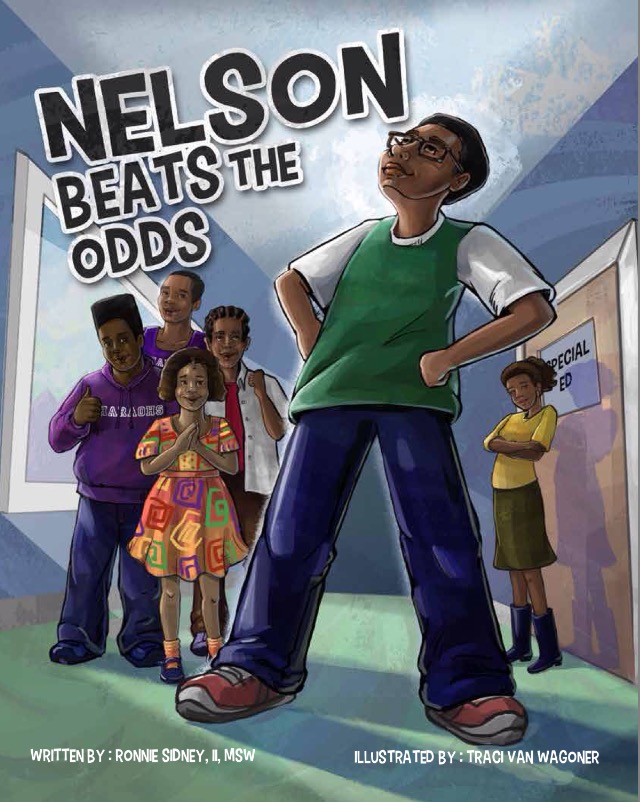written by Ronnie
Sidney II, MSW
illustrated by Traci Van Wagoner
There
is so much to be said about the Public Education system in the United
States. Working in and out of this system, I have witnessed some
stories that makes one want to torch the entire thing. In many cases,
our children are being smashed and discarded on so many levels. In
several parts of the country, the Public Education system serves as a
primer to the prison industrial complex. In those areas, children are
just warehoused and then channeled into prison. In “Nelson Beats
the Odds,” Ronnie Sidney gives the reader a ride through the public
education system in the U.S.
Nelson
is a student who has issues while in school. He is “diagnosed”
with ADHD and placed on medication. The rest of the story shows
Nelson trying to mask his issues and getting into more trouble. Soon
Nelson meets a teacher who really cares and helps him overcome his
issues. Sidney demonstrates how Nelson's entire community stood up to
help him. Despite how the system treated Nelson, he triumphs and
surpasses his goals with the help of family and friends.
Sidney
does a wonderful job at explaining how for many our children there
are systemic and human roadblocks to their growth and development.
Sidney also demonstrates how sometimes we impede the path of our
children in subtle ways. Sidney does not lay blame on any one
institution, instead he points out how deep the problems are. He also
explains how the solution has to be multi faceted. He is clear that
it does take a community to help a child reach his or her goals.
Sidney's simple story telling allows this book to be read by almost
any level while leaving the discussion to the readers. The happy
ending is needed since we see so many stories like Nelson's go in a
completely different direction.
The
illustrations by Traci Van Wagoner are great. Wagoner does a
wonderful job at moving the story. The paneling works well and the
segue's are not confusing. Nelson's constant frustration is evident
through Wagoners breakdowns and coloring. Wagoner seems to work well
with Sidney. The paneling is top notch and easy to follow. This is
not something I see often with new artists.
If
anyone is looking to see where comic books and social justice can
intersect, books such as “Nelson Beats the Odds” are perfect. For
those on the college level who teach future educators, this book is
also recommended. It can be used as a tool to discuss the importance
of empowering students as we educate them. As a parent, this book is
empowering and helpful. Sidney provides tidbits of information that
can help parents make decisions for the future of their children. I
am sure educators can use this tool in clas to find students who feel
exactly how Nelson did. Finally, Sidney explains how educators are
crucial in the role of facilitators. For many students, it can be
that one teacher who makes or breaks them. Through many of the
characters, Sidney introduces the reader to many of Nelson's
detractors and his motivators.

